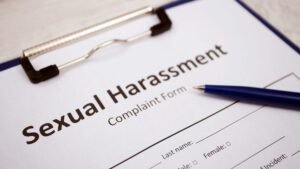Change in Judicial Mechanism
Written by: Ms Shalini Gupta
INTRODUCTION
Intellectual Property means new inventions or creations of the mind such as literary or artistic work, design, symbol, the name of any company or organization or images. In another word, it refers to the ownership of intangible goods. There are six types of Intellectual Property. These are copyright, patent, trademark, industrial design, geographical indication and trade secrets.
Intellectual Property Rights are the rights that are given to the persons for these creations.[1] These rights allow the owner of these inventions to prevent others from using that invention without the permission of the owner. If someone uses that invention without prior permission, the owner can sue them in a court of law. New innovations in all IPR domains lead to Human progress and advancement.[2]
In today’s time i.e. today’s digital time, everything is digital. We can obtain any information through the internet on platforms such as Google, Alibaba, Amazon, Facebook, and Twitter. Many people express their thoughts on a particular topic on these platforms. These thoughts expressed or written by them can be protected under intellectual property rights as they are the creation of their mind. But these days, many people violate their rights by using their thought.
CHALLENGES FACED IN THE DIGITAL ERA
In today’s times, digital information can easily be copied. People copy other people’s ideas without their prior permission. Therefore, Existing copyright law is applicable in the digital age also.[3] unauthorized data sharing, data integration, unethical data utilization and unauthorized public disclosure.[4] However, existing laws in the digital era are subject to various challenges which are very hard to deal with.
The challenges such as the identity of the person who had counterfeited the idea or creation of the owner are very difficult to find in this populated country.[5] From one copy of content or any image, many copies can be formed. Other important issues are unauthorized data sharing, data integration, unethical data utilization and unauthorized public disclosure. However, there is a need for new methods to protect intellectual property from unauthorised use.
COPYRIGHT ACT
Copyright laws grant authors and artists protection for their literary and artistic work and give a copyright holder the exclusive right to control reproduction or adaptation of such works for
a certain period of time i.e. the life of the author plus several decades. Copyright Act deals with the infringement of copyright. After the invention of Information and Communication Technology (ICT), the IPR now has become the central point in this world as many inventions are being copied, altered and deleted easily. Copyright infringement can be in the form of quoting, tracing, recording and announcing the work of others without the author’s permission or not mentioning the source of the creator.
As per copyright law, commercializing the photocopy of the work of others is prohibited. Also, the piracy of video or music without the author’s permission is also a form of violation.[6] Copyright law also violates when students copy the content from the Internet to make their assignments or when the teachers take the content from the Internet to make use of that content in their respective classes. Therefore, the judicial mechanism is also changing day by day as there are so many violations of all these rights.
Under Section 14 of the Copyright Act, no person without the permission of the owner of the work has the right to copy, publish or communicate it to the public.[7] the person who posts the content should be aware of the terms of engagement with the media platform on which these contents are posted as to the right of the platform on this content.[8] If the person has agreed to the condition of the platform that any content posted on the platform would vest ownership on the platform, then the author of the content can have no reason to object if the content is being used by the platform.
DIFFICULTIES IF DIGITAL CONTENT IS COPYRIGHTED
There are various difficulties faced by the owner if his content which is on the Internet is being used without his knowledge or permission. Firstly, it is very difficult for the owner to know that his content is being used or misused. Secondly, if he came to know about his violation, then it is very difficult for him to know who had violated his rights. It is very difficult to trace the IP address for the accused who had misused the owner’s right.
Thirdly, if the owner came to know about the person who had violated his rights, then in the court of law, it is very important to corroborate such things with proof so that he can take compensation from him and to prove such things, he needs evidence which is again very difficult to gather evidence. However, the Indian Judiciary played a pivotal role in protecting the rights of copyright owners in the era of digitalisation.[9]
CONCLUSION
IPR alone is not enough to promote growth. To realise the long-term benefits from IPR’s reforms, the Government should adopt certain policies such as educational reform, market liberalisation and competition enforcement. Copyright Act provides certain acts which are not considered as an infringement in Digital World.[10] These acts include playing songs in an enclosed room or hall, doing research for the purpose of studying, use of content by the teacher to make certain satirical points during class, Access to a journal from the University website or library etc.
There are various remedies that can be used by the owner of the work so that his work cannot be copyrighted. One of the easiest ways to protect the work of the creator of Copyright is the digital watermark. It helps the owner to trace his work and prevent it from duplication.[11] The owner can use the software called ‘access control and copy control’ which enables a user to check the creator on free or illegal use of his work. The rights given to these creators cannot be ignored. There is a need to adopt more advanced policies in copyright law which will help the creator to distribute the information to the public and the creators should be given a reward for these creations.
Keywords: Change in Judicial Mechanism, Change in Judicial Mechanism in IPR, Change in Judicial Mechanism in violating IPR
References
[1] What are intellectual property rights, WORLD TRADE ORGANISATION, https://www.wto.org/english/tratop_e/trips_e/intel1_e.htm?
[2] What is IPR, DUBAI CUSTOMS, https://www.dubaicustoms.gov.ae/en/IPR/Pages/WhatIsIPR.aspx?
[3] Sougata Chattopadhyay, Intellectual Property Rights in Digital Environment, EPrints, http://eprints.rclis.org/28939/1/Intellectual%20Property%20Rights%20in%20Digital%20Environment_ISI.pdf.
[4] Sangharsh Pandey, Changing mechanisms in Copyright ontology: Digital Rights Management, MANUPATRA, http://www.manupatra.com/roundup/328/Articles/digital%20rights%20management.pdf.
[5] Frederick Mostert, The global digital enforcement of intellectual property, WIPO (Sep 2018), https://www.wipo.int/wipo_magazine/en/2018/si/article_0005.html.
[6] Suyud Margono, The role of intellectual property attorneys as a legal profession for dispute resolution in digital industries, TALENTA (Jan, 2019), https://talenta.usu.ac.id/iprreview/article/view/4628/3234.
[7] The Copyright Act, 1957 § 14.
[8] N. Mahabir, copyright protection of online content, MONDAQ (3 July 2017), https://www.mondaq.com/india/copyright/607438/copyright-protection-of-online-content#:~:text=The%20online%20content%20or%20feed,work%20under%20the%20Copyright%20Act.&text=No%20person%20has%20the%20right,work%20in%20the%20offline%20world.
[9] Krishnendra Joshi, copyright in the digital era, IPLEADERS (May 12, 2019), https://blog.ipleaders.in/copyright-digital-era/.
[10] The Copyright Act, 1957 § 52.
[11] Supra note 9.
Previous Posts
Environmental Impact Assessment in India
Privatization Of Natural Resources: A Critical Threat To Sustainable Development
A Socio-legal study of the rights of traditional forest dwellers
Autism; A Socio-Legal Study On Mental Health Care Laws In India




